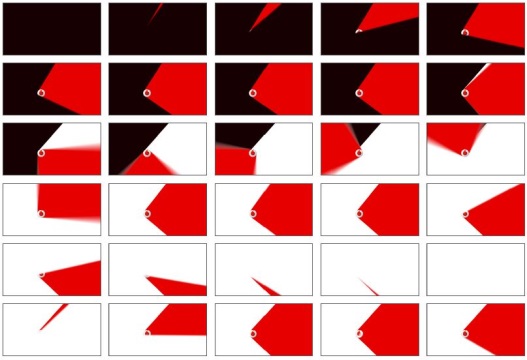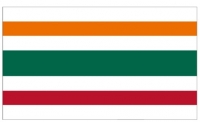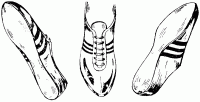The new ‘non-traditional’ trade marks now available in Japan are motion, hologram, colour, sound and position marks. Of particular interest are hologram and position marks, which at present are not explicitly set out in the definition of a trade mark in New Zealand.
Registrable Trade Marks In New Zealand
The Trade Marks Act 2002 defines a trade mark as any “sign” capable of:
i) Being represented graphically; and
ii) Distinguishing the goods or services of one person from those of another person.
And a “sign” is defined as including:
i) A brand, colour, device, heading, label, letter, name, numeral, shape, signature, smell, sound, taste, ticket or word; and
ii) Any combination of signs.
The definition of a sign is non-exhaustive in New Zealand.
Motion, Colour and Sound
Motion (called animation), colour and sound are established categories of trade marks which may be registered in New Zealand.
Motion marks can be best explained as animations – they are marks in which characters and/or figures change as time passes. A motion mark can be represented as a sequence of still images, indicating the progression of the various elements of the mark over its duration, accompanied by a written description. One example is application number 1001737, owned by Vodafone and used in its television advertising, in which:

In frames 1 to 8, the animated red rhombus emanates sideways from a central white circle containing a red speech mark. In frames 9 to 18, the red rhombus rotates once clockwise around the central circle. In frames 19 to 25, the red rhombus shuts from top to bottom. In frames 30 to 35, the red rhombus reopens from top to bottom. The black and white backgrounds shown in the animation are not part of the mark and may contain additional material.
Colour has long been accepted as a component of figure or shape marks in Japan, but now marks consisting only of a single colour or combination of colours are permitted. Well-known marks of this type in New Zealand include BP’s shade of green as applied to service stations (Reg. No 211575) or the various international registrations of 7-Eleven’s 3 horizontal stripes of colour separated by white bands, presently under examination in New Zealand.

Sound marks, generally represented by way of musical notation, are often accompanied by a description of the instrument(s) used and a recording of the mark. In New Zealand most consumers will be familiar with The Warehouse Limited’s registered jingle (Reg. No 252035) or Mr. Whippy’s registered rendition of ‘Greensleeves’ (Reg. No 289083). In Japan, a recording of the trade mark is compulsory, while IPONZ practice guidelines require only a graphic representation.
For a further look at the use of non-traditional marks in New Zealand and overseas, please see our earlier article.
Holograms
Holograms change depending on the angle from which they are viewed. This has traditionally prevented registration in many countries, as each view has been considered to be a mark in and of itself, such that these were viewed as attempts to register multiple trade marks in one go. A further difficulty in registering hologram marks has been the common use of holograms as decorative, rather than distinctive, elements.

The requirements for registering a hologram mark in Japan are comparable to those for a 3D mark – there must be representations of the mark from each possible viewing angle so as to give a full depiction of the distinct nature and features of the mark.
While holograms do not expressly fall within the definition of a ‘sign’ in New Zealand, the non-exhaustive wording of the definition found in s5 of the Act renders it a small step to see that such trade marks can easily fall within the meaning of a ‘sign’. Any issues with the multiple potential images presented by a hologram seem easily reconcilable by following the new Japanese practice. This is particularly so in light of the allowability of 3D, animation and series marks, all of which may present a variety of different images as a single mark.
To our knowledge, no hologram marks have yet been applied for in New Zealand, but as the practice is officially endorsed overseas and becomes more widespread it may not be long before we see some shiny new marks fetching up on our shores.
Position
Position marks are particularly interesting, generally being figures or other elements which are distinctive in and of their placement in a particular position, of a constant or proportionate size, on the relevant goods. The idea is that this consistent placement, absent a functional or merely decorative purpose, can serve to distinguish the origin of goods.
To register a position mark in Japan, applicants need to provide a statement explaining the trade marks which comprise the position mark, as well as the position of the mark on the goods, describing in detail and naming the section of the goods to which they are affixed.
Position marks are somewhat distinct from other marks in the way they are described to IP Offices and the public – generally by way of a graphic representation of the mark in its position on a representation of the goods to which it will be applied, as shown by a dotted line. The shape does not matter and is not part of the mark, but instead provides the context of the position mark. The mark’s description may often disclaim any rights to the shape of the good, as shown below. This also allows the position mark to be affixed to a relatively wide range of similar goods so long as that key position is duplicated.
For example, Adidas has been successful in registering their distinctive ‘three-stripe’ positional mark internationally. The earliest such mark registered in New Zealand (Reg. no 60280) was in 1957, for:
“three lateral stripes of a colour contrasting with that of the sporting footwear to which they are applied. The three stripes extend parallel to each other on the sporting footwear from the lacing to the area of the instep.”

Since then Adidas has registered 10 other similar marks in connection with a wide variety of different clothes and footwear. These have generally been referred to as image marks, and their descriptions have progressed over time to make their nature even clearer. The following mark (Reg. no 750058) covering footwear is described as:
“The mark consists of three parallel equally spaced stripes applied to footwear, the stripes running along the side of the top part of the footwear and in a contrasting colour to that of the footwear to which they are applied, as shown in the representation attached to this application. The dotted outline of the footwear does not form part of the mark and is intended to show the position of the mark.”

New Zealand has long been in the practice of registering position marks, though they have not been referred to in that way.
Other Non-Traditional Marks
While a “smell” falls within the definition of a ‘sign’ in New Zealand, no such trade marks have yet been registered. The Boots Company did apply for “the smell of cinnamon” in relation to pharmaceuticals in 1995 and Uni-Charm applied for three in 2012. These were, however, cancelled and abandoned respectively.
Trade marks have also been applied for overseas for things as diverse as taste, texture and gesture, with varying degrees of success depending on their ability to show the key attribute of a trade mark – that it serves to distinguish the applicant’s goods or services.
One final point to note is the particular importance that the qualification of ‘acquired distinctiveness’ has had with regard to non-traditional trade marks in Western jurisprudence. This has allowed many such marks, which might otherwise lack distinctive character to be registered. This highlights that the field of non-traditional marks is still developing.
It will be interesting to see if Japan will continue to expand the types of trade marks they allow to be registered, whether other Asian countries which do not currently permit non-traditional marks will follow Japan’s lead, and whether there will be greater uptake of such trade marks in countries such as New Zealand which already provide for such trade marks.
This article was written by Joseph Bracewell.
This article is intended to summarise potentially complicated legal issues, and is not intended to be a substitute for individual legal advice. If you would like further information, please contact an AJ Park representative.